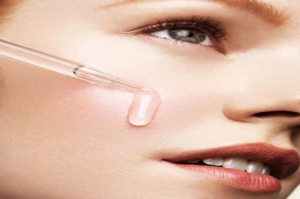Retinol can feel a little intimidating at first, especially when you hear about all the potential side effects like dryness, redness, or flaking. But here’s the truth: retinol doesn’t have to be scary. With a few smart tweaks to your skincare routine, you can get all the glow-boosting, wrinkle-smoothing benefits without the irritation.
If you’re just starting out or giving it another shot after a rough first try, these tips will help you use retinol effectively and keep your skin happy every step.
How to Use Retinol: 4 Effective Tips for Beginners
1.Start Slow, Stay Consistent
This isn’t a sprint. It’s more of a gentle, glowing marathon. One of the most common retinol skincare mistakes is jumping in too fast. Start with a gentle product and use it just two nights a week. If your skin handles it well, gradually increase to every other night. This slow and steady approach helps your skin adjust and reduces the chance of peeling or sensitivity.
Also, less is more. A pea-sized (or pearl-sized) amount is enough for your whole face. Applying more won’t speed up results; it will only irritate your skin.
2.Moisturize Like It’s Your Job
Retinol can dry out your skin, especially if your moisture barrier is already a bit fragile. That’s why hydration is important. After applying retinol serum, follow with a rich, fragrance-free moisturizer that contains hydrating ingredients like hyaluronic acid or niacinamide. If you prefer a retinol cream, choose one with moisturizing ingredients.
Also Read:Benefits of Retinol Serum for Skin Renewal
3. Night Owl Only and SPF Always
Retinol is photosensitive, meaning sunlight can break it down and make your skin more vulnerable to damage. That’s why it’s best to apply it at night. In the morning, sunscreen is essential. Go for a broad-spectrum SPF daily , even on cloudy days or if you’re mostly indoors.
Pro tip:Don’t forget to protect your neck, chest, and hands too. These areas are often overlooked but tend to show signs of aging first.
4. Expect an Adjustment Period
It’s normal for your skin to go through a short “retinization” phase. You might notice some flaking or a feeling of tightness. These are some of the most common retinol side effects on the face, especially during the first few weeks of use. That doesn’t mean retinol isn’t working; it just means your skin is adjusting. Give it time. If the irritation becomes intense, take a short break and focus on hydration before easing back in.
Also, not all retinoids are the same. Gentler forms like retinyl propionate or retinaldehyde can deliver many of the same benefits with a lower risk of irritation.
Final Thoughts
Yes, retinol can come with a learning curve, but with a little patience and care, the payoff is worth it. Think smoother skin, fewer fine lines and wrinkles, and that healthy, radiant glow that just keeps getting better over time.
Still feeling unsure? A dermatologist can help guide you to the right formula for your skin. And if you’re looking for a gentle starter product, Olay Retinol24 Night Face Cream isa great place to begin. This advanced formula combines retinyl propionate and niacinamide to visibly improve fine lines, wrinkles, smoothness, brightness, and dark spots.
Olay’s retinol cream absorbs quickly and penetrates deep into the skin’s surface layers, so you wake up every morning with younger-looking, glowing skin. It’s fragrance-free and beginner-friendly, perfect for easing into your retinol journey.



